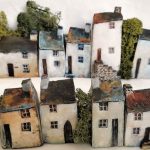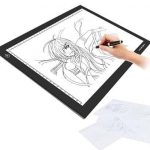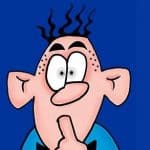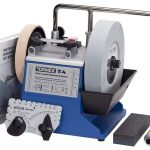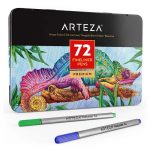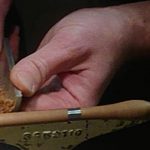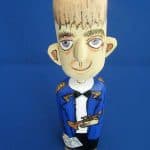What is Aida cloth, evenweave and cloth count?
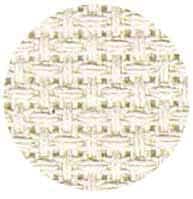 What is Aida Cloth?
What is Aida Cloth?
Also known as ‘Java canvas’, Aida cloth is an open and even weave fabric generally constructed of pure cotton or with blends of cotton and linen.
This is the main stay of cross stitchers fabric as it is very easy to use and is ideal for cross stitching. It has strength and is inherently stiff enough to allow stitching without the use of a cross stitching hoop or frame.
Aida cloth is graded by the spacing of the squares in ‘counts’ generally from 6 and 8 count (known as ‘Herta’ which have large squares) up to 20 count (known as ‘fine’ with small squares). 14 count is generally the most common used as it is readily available with a good color range to choose from.
For beginners and children a larger square Aida cloth such as 6 or 8 count is good for learning the craft as the squares are easy to see. As you progress the higher counts get easier to work on. A 20 count Aida cloth can provide a finish with great detail.
The evenweave provides an ‘even square’ template making it simple to create perfect cross stitches. You can buy plain or colored Aida Cloth by the meter or in much smaller pieces. Ready cut project pieces are also found in cross stitch kits which are pre-cut to the size of the pattern in the kit.
Aida cloth first appeared around 1890 and was specifically produced for cross stitchers by the manufacturer Zweigart.
Evenweave vs non-evenweave
Evenweave is a term often referred to in cross stitching. A fabric that has the same number of threads per inch in both directions (horizontal and vertical – also known as the ‘warp’ and ‘weft’) is said to be of an ‘even weave’ or evenweave. Conversely where the number of threads per inch is not the same per inch in both directions it is a ‘non even weave’.
The following short video demonstrates the difference with a variety of cloth examples and two samplers created on evenwear and non-evenwear cloth.
What other cross stitching fabrics are there?
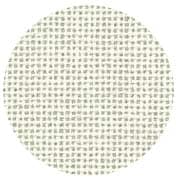 Lugana cloth
Lugana cloth
This has a slightly different composition being made of a blend of cotton and viscose (viscose is a form of regenerated cellulose – also known as known as rayon). The viscose element gives the fabric a heavy and soft fabric texture.
The layout of the fibres has an even weave, which is easy to count for cross stitchers. Laguna cloth is generally used for Table linens, pillows and highly decorative projects that require a soft silky feel.
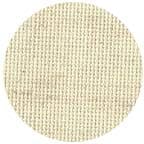 Fiddlers Cloth
Fiddlers Cloth
This is similar to Aida cloth but is a little more ‘rustic’. The cloth has an irregular look with a slightly uneven layout of the threads and mesh. This gives cross stitching work a rural old fashioned appearance.
Fiddlers cloth is ideal if you are looking to complete a less formal project that requires a certain rustic feel.
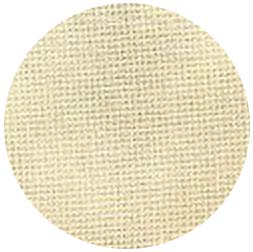 Jobelan cloth
Jobelan cloth
Jobelan is a 50:50 mixture of cotton and man made fibre usually Rayon. This can also be modal a semi cellulose fibre made from reconstructed beech wood pulp.
The cloth has a smooth quality with a beautiful sheen that is very good to work with. Jobelan cloth is easily washable. This makes it ideal for cross stitching projects such as table cloths, cushions and pillows which require frequent washes.
Jobelan fabric comes in a multitude of different colors and shades with a common thread count of 16 through to 28.
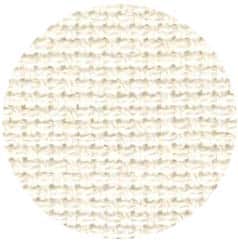 Hardanger Cloth
Hardanger Cloth
Hardanger or “Hardangersøm” is a specific style of embroidery with white thread on white cloth. It’s origins are believed to be rooted in ancient Persia and Asia. It has developed over centuries into other forms of embroidery such as Italian Reticella and Venetian Lacework.
Harbinger cloth is a white evenware cloth made from 100% cotton. It is used for Hardanger embroidery but is very attractive to cross stitchers as it allows for fine detail with a 22 count. It is a particular favourite for ornaments and doilies where delicate stitching is required. Harbinger is also known as whitework embroidery due to the white stitching on white cloth.
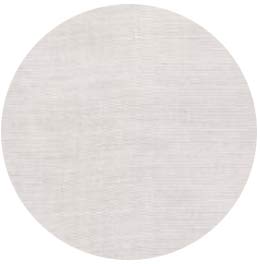 Linen Cloth
Linen Cloth
Linen is created from natural flax fibres and differs in its weave from evenweave. Linen fibres are not even thickness so that there is not always an even stitch per inch ratio.
The general feel of linen is ‘crisp’ and can offer a rustic look to a project. There are some subtle color variations which are derivatives of raw linen. There are various counts ranging from 18 through to 40, each with it’s own particular term. The main linen variations are:
Linen Hardanger: which is an evenweave of 16 count and made of pure linen. This is a fairly course linen with pronounced stick holes and is a useful alternative to Aida cloth.
Belfast Linen: A lighter softer linen with a 32 count and available in a large variety of colors.
Cashel Linen: A lighter, softer linen with a 28 count that is available in a large variety of colors.
Edinburgh linen: A 36 count which is available in a small number of neutral colors. This is made of 100% linen fibre.
Newcastle linen: A 40 count which is available in a small number of neutral colors. This is made of 100% linen fibre.
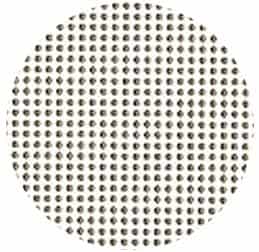 Perforated paper
Perforated paper
This was first in vogue during Victorian times when it was fashionable to make wall hung samplers from bookmarks and bible quotations and verses. Perforated paper is generally available in 14 count and in many colors and textures with solid and marbled finishes being the favourites. In todays cross stitching projects perforated paper is ideal for Xmas ornaments and bookmarks.
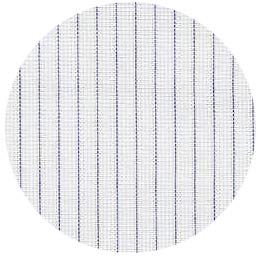 Waste Canvas
Waste Canvas
Waste canvas, as the name suggests is a sacrificial material used as a template. Some fabrics such as clothing, heavy table cloth and napkins do not really suit cross stitching. Waste canvas can be placed over the fabric and then pulled off when complete to leave the garment and stitching.
If you would like to try out a cross stitching project kit see the review of five high rated cross stitching kits for beginners right here…
We also have a comprehensive introduction to cross stitching which looks at the basic stitches to get you on your way

